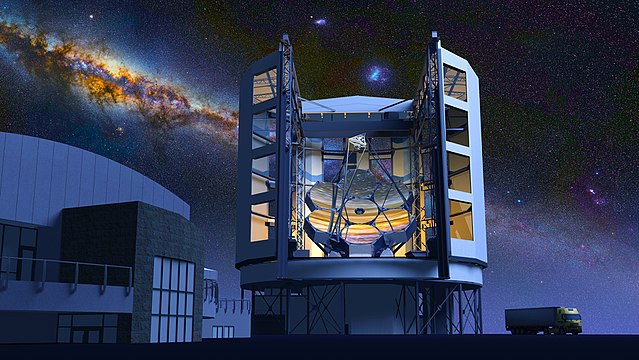Top Qs
Timeline
Chat
Perspective
Carnegie Institution for Science
American non-profit research organization From Wikipedia, the free encyclopedia
Remove ads
Carnegie Science, also known as the Carnegie Institution of Washington and formerly Carnegie Institution for Science, is a nonprofit organization established in 1912 to fund and perform scientific research in the United States. The institution is headquartered in Washington, D.C. In 2018, expenses for scientific programs and administration totaled $96.6 million.[1] As of June 30, 2020[update], the institution's endowment was valued at $926.9 million.[2] The current president is American astronomer and astrophysicist John Mulchaey, whose official term began in November 2024.[3]
This article needs additional citations for verification. (January 2011) |
Remove ads
Name
More than 20 independent organizations were established through the philanthropy of Andrew Carnegie and feature his surname.
In 2024, the "Carnegie Institution for Science" officially adopted the name "Carnegie Science", a name which has been used informally since 2007 when they first changed the name from "Carnegie Institution of Washington" to "Carnegie Institution for Science".
History


It is proposed to found in the city of Washington, an institution which ... shall in the broadest and most liberal manner encourage investigation, research, and discovery [and] show the application of knowledge to the improvement of mankind.
—Andrew Carnegie, January 28, 1902[4]
When the United States joined World War II, Vannevar Bush was president of the Carnegie Institution of Washington. Several months prior to June 12, 1940, Bush persuaded President Franklin Roosevelt to create the National Defense Research Committee (later superseded by the Office of Scientific Research and Development) to coordinate the nation's scientific war effort. Bush housed the new agency in the Carnegie Institution's administrative headquarters at 16th and P Streets, Northwest, in Washington, D.C., converting its rotunda and auditorium into office cubicles. From this location, Bush supervised multiple projects, including the Manhattan Project. Carnegie scientists assisted with the development of the proximity fuze and mass production of penicillin.[5]: 77–79
Remove ads
Research
Summarize
Perspective
John Mulchaey, an American astronomer and astrophysicist, is the institution's 12th president.[6] Carnegie Science is composed of three scientific divisions on the East and West Coasts that center on life and environmental science, Earth and planetary science, and astronomy and astrophysics: Biosphere Sciences & Engineering, Earth & Planets Laboratory, and Observatories.[7] In addition to facilities in the United States, Carnegie Science manages the Las Campanas Observatory in Chile.
Life and Environmental Sciences

Carnegie Science’s life and environmental science research activities are currently housed under the institution's Biosphere Sciences & Engineering Division and were historically housed under departments, including the Department of Embryology in Baltimore, MD and the Department of Global Ecology in Palo Alto, CA.[8] The former Department of Plant Biology began as a desert laboratory in 1903 to study plants in their natural habitats. Over time, the research evolved to the study of photosynthesis. The department develops bioinformatics. Among its notable staff members are Nobel laureates Andrew Fire, Alfred Hershey, and Barbara McClintock.
Astronomy & Astrophysics

The Carnegie Science Observatories were founded in 1904 as the Mount Wilson Observatory. Andrew Carnegie funded the historic Hooker 100-inch telescope envisioned by George Ellery Hale on which Edwin Hubble captured the famous “VAR!” plate that led to the discovery of Andromeda.[9] As Los Angeles encroached more on Mount Wilson, day-to-day operations there were transferred to the Mount Wilson Institute in 1986.[10] Today, Carnegie astronomers operate from offices in Pasadena and from the Las Campanas Observatory in Chile’s Atacama region established in 1969.[11] The Las Campanas Observatory is home to the twin 6.5-meter Magellan Telescopes, 2.5-meter Irénée du Pont telescope, and 1.0-meter Swope telescope.[12]
Earth & Planetary Science
In 2020, the Department of Terrestrial Magnetism and Geophysical Lab merged to become the Earth and Planets Laboratory, located on the organization's Broad Branch Road campus in Washington. The Laboratory is a member of the NASA Astrobiology Institute.[13] The Department of Terrestrial Magnetism was founded in 1904 and used two ships for magnetic observations around the world: the Galilee was chartered in 1905, but it was unsuitable; later, Carnegie was built in 1909 and completed seven cruises to measure the Earth's magnetic field before it suffered an explosion and burned.[5]: 133–136
Remove ads
History
In 1920, the Eugenics Record Office, founded by Charles Davenport in 1910 in Cold Spring Harbor, New York, was merged with the Station for Experimental Evolution to become the Carnegie Institution's Department of Genetics. The Institution funded that laboratory until 1939; it employed Morris Steggerda, an American anthropologist who has collaborated with Davenport. The Carnegie Institution closed the department in 1944. The department's records were retained in a university library.
Remove ads
Carnegie Academy for Science Education and First Light
In 1989, Carnegie President Maxine Singer founded Carnegie Academy for Science Education and First Light (CASE), a free Saturday science program for middle school students. The program teaches hands-on learning in science.
Administration
The Carnegie Institution's administrative offices were located at 1530 P St., Northwest, Washington, D.C., at the corner of 16th and P Streets until 2020. The building housed the offices of the president, administration and finance, publications, and advancement. In 2020, the administrative building was sold to the government of Qatar to be used as its embassy.[14]
Partnerships
Carnegie Science and Caltech formalized a partnership in Pasadena.[15] The Carnegie Institution has partnered with several other organizations in constructing the Giant Magellan Telescope.
Presidents
The following persons had served as president of the Carnegie Institution for Science:[16]
Remove ads
See also
References
External links
Wikiwand - on
Seamless Wikipedia browsing. On steroids.
Remove ads







